
EAT MORE HEALTHY FATS
DON’T SKIP. SWAP!
IT’S HARD TO DENY: Butter is delicious, bacon makes dishes better, and a splash of cream rarely hurts anything. Fats make food taste good. The problem is, Americans don’t stop at a little, and we’re eating way too much saturated fat. Then there are those people on the other end of the spectrum—leftovers from the low-fat era—who rely on fat-free or reduced-fat products that leave them unsatisfied and low on healthy fats.
Here’s a primer on fats: Our bodies need fat to function properly. But saturated fats—those found in foods such as meats, butter, and other high-fat dairy products—tend, when eaten too often, to raise LDL (“bad”) cholesterol levels and promote plaque buildup in your arteries. This is also true of trans fats, which are the result of the process that turns liquid fats solid for use in shortening, margarine, and processed foods. Saturated fat intake should be kept to less than 7% of total daily calories; trans fats should be avoided.
As for butter, we’ve got some good news: You don’t have to give it up. You just need creative ways to substitute heart-healthy fats for the saturated kind more often.
The fats that we do need are the monounsaturated and polyunsaturated ones that help our bodies absorb vitamins and minerals from foods, lower LDL and total cholesterol, and keep us feeling full and satisfied. Replace unhealthy fats with good ones; those you’ll find in vegetable oils, fish, nuts and nut butters, seeds, and avocados.
You’ll find lots of ideas about swapping the bad for the good in this chapter, along with a plan to help you enjoy healthy fats more often.
YOUR GOAL
Increase healthy fats and decrease unhealthy fats every day.
The 12 Healthy Habits

The Key Players
MONOUNSATURATED FAT

Found in: Canola, olive, and peanut oils, as well as peanuts, pecans, and avocados
What you need to know: These plant-based fats lower cholesterol when used in place of saturated fat in your diet. Research also suggests that they may have other health benefits: One study, for example, found that this type of fat helps trim weight around the waist, which is important because fat stored deep around the belly increases risk for heart disease, diabetes, breast cancer, and high blood pressure.
Smart cooking strategies: While olive oil attracts the most attention, canola and peanut oils are both good sources of monounsaturated fat and have high smoke points (the temperature where oil begins to burn); canola oil has a mild flavor, which is great for baking or sautéing, while peanut oil delivers nutty flavor to stir-fries or Asian-inspired vinaigrettes.
POLYUNSATURATED FAT
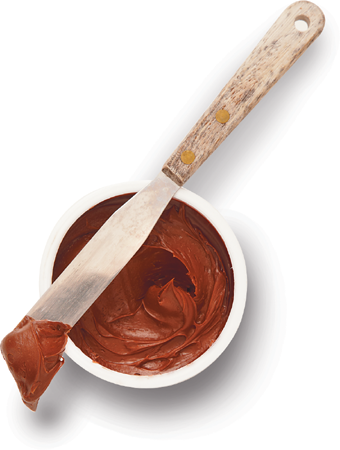
Found in: Vegetable oils like soybean, corn, and sunflower; oily fish like tuna and mackerel; and most nuts and seeds
What you need to know: These plant-and fish-derived fats lower cholesterol when they replace saturated fat in your diet. Fatty fish like salmon and tuna contain omega-3 fatty acids (a type of polysaturated fat), while certain nuts and oils offer another type.
Smart cooking strategies: Use small amounts of nuts and oils in cooking. Toast nuts and seeds to intensify flavor, and sprinkle them on top of a salad or dish to get the most textural and flavorful impact. And eat more fish—aim for at least two servings per week.
The Not-So-Key Players
SATURATED FAT

Found in: Beef, lamb, pork, bacon, cheese, whole-milk yogurt, butter, whole milk, coconut, coconut oil, palm oil, and palm kernel oil
What you need to know: These solid fats raise LDL cholesterol and increase heart disease risk. The American Heart Association advises limiting saturated fat to less than 7% of total calories, about 15 grams for the average person on a 2,000-calorie-a-day diet. (If you’re counting, a teaspoon ofbutter contains nearly 3 grams of saturated fat, and a 3-ounce filet mignon has about 10 grams.)
TRANS FAT
Found in: Any products with partially hydrogenated oils inthe ingredient list
What you need to know: Produced when liquid oils are processed into solid shortenings and margarines, trans fats raise LDL or “bad” cholesterol, and lower HDL or “good” cholesterol. These artificial fats are also more likely to raise insulin resistance, which is a precursor to diabetes.
THE MESSAGE IS SIMPLE: Replace solid fats (animal fats, shortening, and stick margarine) with liquid oils. Here, some ideas while cooking and meal planning to make it easier:
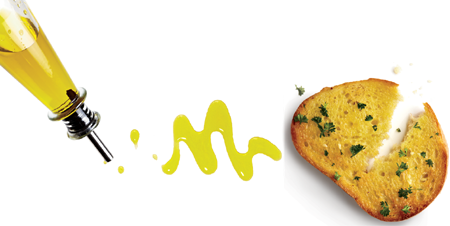
Instead of butter: Sub in olive or canola oil when you sauté or stir-fry. If you can’t live without the taste of butter, cut the saturated fat in half by using equal parts olive oil and melted butter.
Instead of regular mayo: Sub in canola or olive oil mayonnaise for dips, casseroles, and salad dressings.
Instead of creamy bottled salad dressings: Sub in homemade vinaigrettes with extra-virgin olive oil.
Instead of dips with a sour cream base: Sub in hummus, guacamole, or nut-based dips (like Muhammara to serve with fresh veggies.
Just because a food is labeled “trans-fat free” doesn’t mean it’s a healthy choice. It might still be high in saturated fat or have lots of sugar and empty calories. So take a closer look before it lands in your shopping cart.
EXPERT TIP: Get to Know The Nuances of Olive Oil

“As with wines, there are many different expressions of aroma and flavor. Some olive oils have a greener, more peppery taste, while others are golden and smooth. Explore the way some mellow out the bite of dark green lettuces in a tossed salad while others add a bright note to baked chicken.”
—Carolyn O’Neil, MS, RD, blogger, Dish on Dieting
WITH BUSY LIVES AND HECTIC SCHEDULES, it’s no surprise your pantry may need a facelift. The problem is, crackers, cookies, and other snacky foods often harbor unhealthy trans fats, a particular type of fatty acid created during processing when hydrogen is added to liquid vegetable oil to make it solid. A labeling loophole allows food makers to list 0g trans fats if a single serving of the food has less than half a gram. Eat two servings, though, and you might have consumed nearly half the daily limit of 2 grams. Here, smart choices that will up your intake of healthy fats without sacrificing taste:
DARK CHOCOLATE AND NUTS
You’ll get healthier mono-and polyunsaturated fats from the nuts; you can even add in some dried fruit to displace some of the chocolate.
OLIVES
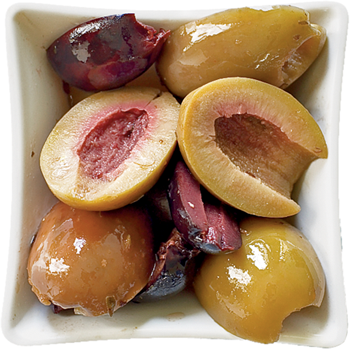
They gratify a salty craving and help you feel satiated, yet unlike traditional salty snacks like pretzels and potato chips, they supply a decent amount of heart-healthy fats.
ROASTED ALMONDS
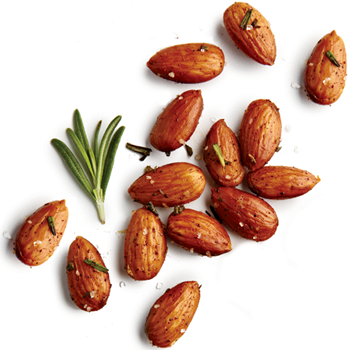
They may look high in fat, but it’s really the healthy kind. In fact, studies show that consuming small amounts of nuts regularly has been linked to reduced risk of heart disease. Try roasting them with flavorful ingredients such as cinnamon, coriander, or fresh rosemary. Just practice portion control: One ounce (about 20 almonds) has about 170 calories.
WHAT’S A SERVING?
While this chapter is all about embracing the good-for-you fats, it’s important to keep an eye on your daily intake. For a 2,000-calorie diet, the daily recommendation is 2 tablespoons of oil a day. Below, the amount of healthy fat equal to 1 tablespoon of oil:
▪ 2 tablespoons Italian dressing
▪ 1 tablespoon canola mayonnaise
▪ 4 large olives
▪ ½ medium avocado
▪ 2 tablespoons peanut butter
▪ 1 ounce almonds
▪ 1 ounce seeds
Fresh fruit is a no-brainer when it comes to healthful snacks. But you can make it more palatable to your crew by topping it with your favorite peanut or other nut butter—a tablespoon will provide you about one-fourth of your daily healthy fat intake. (Just read the label to make sure it doesn’t have any artery-clogging trans fats added in there.)
BAKED CHIPS WITH HOMEMADE GUACAMOLE

Avocados are powerhouses of healthy fats. While they’re high in calories, it’s worth it for their rich buttery taste. It’s also supersimple to make your own guacamole.
Quick Snack
Guacamole with Fish Sauce
This recipe is for when you have perfectly ripe avocados—there’s no need to add tomato or other complications. Place 2 ripe peeled and seeded avocados in a medium bowl; mash roughly with a fork. Add 1 tablespoon fresh lime juice, 1 teaspoon Thai fish sauce, and ¼ teaspoon kosher salt; mash to desired consistency. Stir in 2 table-spoons chopped fresh cilantro. Garnish with additional cilantro, if desired. Serves 4 (serving size: about ¼ cup).
CALORIES 33; FAT 14.7g (sat 2.1g, mono 9.9g, poly 1.8g); PROTEIN 2.1g; CARB 9.3g; FIBER 6.8g; CHOL 0mg; IRON 0.6mg; SODIUM 243mg; CALC 14mg
READER TIP: Make Your Own Nut Butter
“I love peanut butter…with chocolate, on pretzels and crackers, on bananas, on carrotsticks, or on sandwiches. I’m not limited to peanut butter, though. Any nut will do. There is nothing quite like spreading warm, fresh cashew butter onto a piece of toasted bread. In fact, once you make (and taste) your own, anything store-bought seems to pale in comparison.”
—Caroline Ford
ADDING HEALTHY UNSATURATED FATS to your meals doesn’t mean completely nixing the saturated ones. “The richness fat provides, especially in butter and cream, is part of what makes comfort foods so comfy,” says Tiffany Vickers Davis, assistant test kitchen director at Cooking Light. “You don’t have to cut beloved dairy fats out of your life entirely. You just need creative ways to substitute heart-healthy fats for unhealthy saturated fats more frequently. Here, she shares what she’s learned:

The Raised-on-Butter Cook
“I’ve learned how to balance my love of butter with healthier fats.”
TIFFANY VICKERS DAVIS
Cooking Light Assistant Test Kitchen Director
 HEALTHY FAT CHALLENGE: Being a senior member of the Cooking Light Test Kitchen has made Tiffany Vickers Davis an expert on healthy cooking but not immune to the lure of a little extra butter. Tiffany’s family emigrated from Germany when she was young. Despite the move, the kitchen remained strictly northern European. “My mother made lots of cream soups and boiled potatoes with butter.” Like anyone else working in a kitchen, Tiffany is surrounded by food, including butter and cream. Here’s what she’s learned to keep her diet in check while not missing out on the flavors she loves:
HEALTHY FAT CHALLENGE: Being a senior member of the Cooking Light Test Kitchen has made Tiffany Vickers Davis an expert on healthy cooking but not immune to the lure of a little extra butter. Tiffany’s family emigrated from Germany when she was young. Despite the move, the kitchen remained strictly northern European. “My mother made lots of cream soups and boiled potatoes with butter.” Like anyone else working in a kitchen, Tiffany is surrounded by food, including butter and cream. Here’s what she’s learned to keep her diet in check while not missing out on the flavors she loves:
HER ADVICE
▪ Think of a meal as a balancing act. Indulge in one rich food, then balance it with healthier choices. If you’re having ribeye (high in saturated fat), make leaner sides. Instead of baked potatoes topped with sour cream, boil or roast spuds and toss with tasty olive oil and fresh herbs. Replace creamy salad dressings with a heart-healthy vinaigrette.
▪ Use butter to finish dishes. Cooking with butter throughout your meal ups your saturated fat intake. For maximum flavor impact, add it toward the end instead. Sauté veggies in olive or canola oil, then use a bit of butter to finish, tossing to melt and coat. Sprinkle buttered breadcrumbs on top of pasta dishes as a last touch. This way, the flavor will be up front on your palate when you bite in.

“Our family loves sweets, cookies, and chips of every kind.”
MONICA INGLES
Cake Shop Owner
 HEALTHY FAT CHALLENGE: With Monica’s hectic schedule and her family’s picky palates, her pantry is filled with processed foods. “When he was small,” Monica says, “my oldest son would eat a variety of healthy foods, and then it was like somebody flipped a switch: Suddenly, all he wanted was snack foods. I want what they’re eating to nourish their bodies, but I don’t want the constant argument that it doesn’t taste good.” The key to turning this situation around is finding healthy snacks that deliver on convenience, taste, and nutrition.
HEALTHY FAT CHALLENGE: With Monica’s hectic schedule and her family’s picky palates, her pantry is filled with processed foods. “When he was small,” Monica says, “my oldest son would eat a variety of healthy foods, and then it was like somebody flipped a switch: Suddenly, all he wanted was snack foods. I want what they’re eating to nourish their bodies, but I don’t want the constant argument that it doesn’t taste good.” The key to turning this situation around is finding healthy snacks that deliver on convenience, taste, and nutrition.
OUR ADVICE
▪ Don’t ditch your favorite snacks; revamp them. Try whole-grain crackers and lightly toasted almonds mixed with seasonings instead of chips and cheese curls. If your kids love stuffed pretzels, try low-sodium pretzels dipped in peanut butter. Sliced apples spread with peanut butter are a delicious alternative to sugary caramel-covered apple wedges.
▪ Pop your own popcorn. Many microwave popcorns harbor hefty amounts of saturated and trans fats. Reduce those solid fats by popping your own: Heat kernels (¼ cup of kernels makes about 8 cups) with toasted sesame oil or peanut oil in a Dutch oven until they pop; sprinkle lightly with kosher salt. Or, if you have a sweet tooth, sprinkle on some cinnamon sugar. Bonus: Popcorn is a whole grain!
▪ Get creative with candy. Customize your own chocolate bark using melted dark chocolate combined with chopped nuts and dried fruit. Or make a chocolate trail mix with antioxidant-rich dark chocolate chips, nuts, and whole-grain cereal. Then portion the mix into single-serve bags for easy grabbing.
Reduce fat and sodium by baking your own pita, tortilla, and veggie chips. Make your own onion, ranch, or avocado dip using fat-free Greek yogurt and olive oil.
DESPITE WHAT FAT-PHOBES MAY THINK, nuts are not a dietary no-no. These healthy-fat power players offer a satisfying crunch and a variety of health perks. Here’s a rundown of some of the best (and tastiest!) options:
ALMONDS
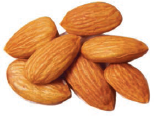
Studies show that a handful a day—about 23 almonds—can help lower LDL cholesterol levels and fight inflammation.
CHESTNUTS

Chestnuts contain a high amount of starch and little oil—1 ounce contains just 0.5g total fat. They also offer a healthy dose of potassium.
CASHEWS

High in oleic acid, a monounsaturated fat also found in olive oil, cashews may help reduce blood pressure.
BRAZIL NUTS
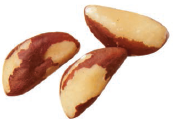
They pack a punch of selenium, a mineral and antioxidant that may help prevent certain types of cancer.
HAZELNUTS
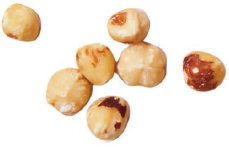
They’re an excellent source of vitamin E, dietary fiber, magnesium, and a heart-healthy compound called proanthocyanidin.
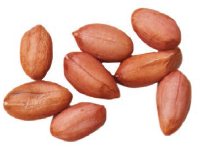
Studies show that eating peanuts and peanut butter can lower cholesterol levels and triglycerides, decreasing your risk of heart disease.
PECANS

They’re rich in vitamin E, flavonoids, and plant sterols, natural compounds that help lower cholesterol.
PISTACHIOS
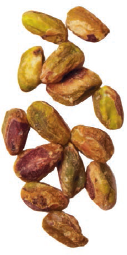
They’re rich in carotenoids, including beta-carotene and lutein.
MACADAMIA NUTS

They are one of the few plant sources of palmitoleic acid, which helps lower cholestorol and reduce risk of heart disease.
PINE NUTS

Each tiny kernel packs a surprising amount of vitamin E, manganese, copper, and magnesium.
WALNUTS
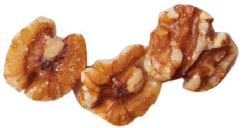
Studies show that walnuts can increase good cholesterol and decrease the bad kind.
THERE ARE PLENTY OF REASONS TO NOSH ON NUTS: They’re packed with healthy fats, plant protein, dietary fiber, and nutrients like vitamin E and folic acid. Studies show frequent nut-eaters have a lower risk of heart disease and diabetes and tend to be thinner than people who never or rarely eat nuts. Dietary guidelines recommend 4 ounces per week. Here are five easy ways to add them to your diet:
1. START YOUR DAY WITH NUTS.
Top your oatmeal or yogurt parfait with walnuts, slivered almonds, or nut butters. The extra hit of protein helps boost the staying power of your breakfast.
2. MAKE YOUR OWN TRAIL MIX.
Combine dry-roasted, lightly salted nuts (peanuts, cashews, pistachios, almonds, and macadamia nuts) with dried fruits, such as raisins, dried cranberries, chopped dried apricots, or figs.

This walnut-based sauce provides a dose of healthy fats.
3. ADD CRUNCH TO SALADS.
In place of croutons or bacon bits, sprinkle salads with pistachios, walnuts, pecans, or other nuts.
4. TRY NUTTY SAUCES.
Ground nuts make a flavorful base for a Mediterranean-style sauce, like Cilantro-Walnut Pesto, or a dip for veggies or to spread on pita and bruschetta.
5. BAKE THEM IN.
Add them to breads, muffins, cookies, and cakes: Sprinkling nuts on top of the batter before it bakes, rather than mixing them in, helps ensure a bit of nutty flavor.
These nuts are a wonderful addition to a salad or served as a snack.
1 cup sliced almonds
⅓ cup packed brown sugar
1 teaspoon ground cinnamon
½ teaspoon ground coriander
½ teaspoon ground cumin
1 large egg white, lightly beaten
Cooking spray
1. Preheat oven to 325°.
2. Combine almonds and next 4 ingredients in a small bowl. Stir in egg white. Spread mixture evenly onto a foil-lined baking sheet coated with cooking spray. Bake at 325° for 10 minutes. Stir mixture; bake an additional 15 minutes or until crisp. Transfer foil to a wire rack; cool almond mixture. Break almond mixture into small pieces. Serves 16 (serving size: 2 tablespoons). Note: Store at room temperature in an airtight container for up to one week.
CALORIES 54; FAT 3g (sat 0.2g, mono 2g, poly 0.8g); PROTEIN 1.6g; CARB 5.8g; FIBER 0.8g; CHOL 0mg; IRON 0.4mg; SODIUM 6mg; CALC 22mg

Fresh rosemary lends a wonderful fragrance, and chili powder provides just the right amount of spiciness. “These are my absolute favorite snack!” said KRFoodie on CookingLight.com. “I use dried rosemary instead of fresh.”
1 tablespoon finely chopped fresh rosemary
1 tablespoon extra-virgin olive oil
1 teaspoon chili powder
¾ teaspoon kosher salt
Dash of ground red pepper
1 (10-ounce) bag whole almonds (about 2 cups)
1. Preheat oven to 325°.
2. Combine all ingredients in a medium bowl; toss to coat. Arrange nut mixture in a single layer on a baking sheet lined with foil. Bake at 325° for 20 minutes or until lightly toasted. Cool to room temperature. Serves 16 (serving size: 2 tablespoons).
CALORIES 33; FAT 9.9g (sat 0.8g, mono 6.3g, poly 2.3g); PROTEIN 3.8g; CARB 3.6g; FIBER 2.1g; CHOL 0mg; IRON 0.8mg; SODIUM 94mg; CALC 45mg
Seven nuts qualify for the FDA health claim related to heart disease prevention: almonds, hazelnuts, peanuts, pecans, pine nuts, pistachios, and walnuts. Brazil nuts, cashews, and macadamias, while still healthy, do not meet the criteria because of their higher saturated fat levels.
Orange Chipotle Spiced Pecan Mix
Prepare a batch of this smoky-sweet mix to have on hand or pack into decorative jars to give as gifts. “The best!” said Carson5000 on CookingLight.com. “I think it’s worth it to get the chipotle pepper; it really adds a unique flavor to the nut mix. We had these on our hors d’oeuvres table, and I swear people ate more of these nuts than anything else.The cranberries give it a nice tang and balance the spice out perfectly.”
1 tablespoon grated orange rind
1 tablespoon fresh orange juice
1 large egg white
2 cups pecan halves
1 tablespoon dark brown sugar
1 teaspoon kosher salt
½ teaspoon ground chipotle chile pepper
Cooking spray
½ cup sweetened dried cranberries
1. Preheat oven to 225°.
2. Combine first 3 ingredients in a medium bowl; stir with a whisk. Stir in pecans. Combine sugar, salt, and pepper. Add to pecan mixture; toss well. Arrange mixture in a single layer on a jelly-roll pan coated with cooking spray. Bake at 225° for 1 hour, stirring occasionally. Remove from oven; cool completely. Stir in cranberries. Serves 20 (serving size: 2 tablespoons).
Note: Store in an airtight container for up to one week.
CALORIES 33; FAT 7.7g (sat 0.7g, mono 4.6g, poly 2.4g); PROTEIN 1.2g; CARB 4.8g; FIBER 0.8g; CHOL 0mg; IRON 0.3mg; SODIUM 98mg; CALC 1mg
EXPERT TIP: Fats Have Staying Power

“People have a tendency to fill up on foods that do not have much fat, but then they feel hungry soon after eating. Including some healthy fats will make your meal or snack more satisfying. For instance, a trail mix with almonds and dried fruit will have a lot more staying power compared to the dried fruit alone.”
—Bonnie Taub-Dix, MA, RD, blogger, Better Than Dieting
Oops! The Biggest Fat Mistakes
YOU MIGHT THINK YOU’RE BEING HEALTHY, but these four common mistakes may be upping your intake of saturated fat and lowering your intake of good-for-you fats.
1. OOPS! You automatically swap turkey bacon for the pork kind.

Result: Bacon is a prime example of why label-reading is important. Some versions of turkey bacon contain as much saturated fat as pork bacon.
What to do: Look for lean, lower-sodium turkey bacon or opt for a lean pork kind such as center-cut.
2. OOPS! You trade ground turkey for ground beef in recipes to save saturated fat.
Result: A quarter pound of regular ground turkey contains 3 grams saturated fat, compared to only 2.5 grams in the same amount of sirloin.
What to do: Buy ground turkey breast, which has just half a gram of saturated fat.
3. OOPS! You spoon on whole flaxseeds.
Result: While flaxseeds are an excellent way to add omega-3 fatty acids to baked goods, oatmeal, and cereal, the whole seeds tend to, um, pass right through.
What to do: Grind the seeds; unlock the goodness.
4. OOPS! You buy 80/20 ground beef thinking only 20% of the calories come from fat.

Result: The 80/20 percentage refers to the proportion of fat and protein in the grind, not the proportion of calories. As a result, you’re getting way more fat in your burger or meat loaf than you thought.
What to do: Buy a much leaner grind, such as 90/10, or ask for a lean whole cut like sirloin to be custom ground for you, which will be fresher anyway.
READER TIP: Switch Up Stir-Fries

“Experimenting with stir-fries is one of the most effective ways I incorporate healthy oils. I use olive oil a lot—my husband is Greek, so you’ve got to use the olive oil—and I’ve been using sesame oil as a finishing touch for flavor in our stir-fries or in a marinade for chicken or steak.”
—Julianne Saratsis, Cooking Light Healthy Habits Graduate
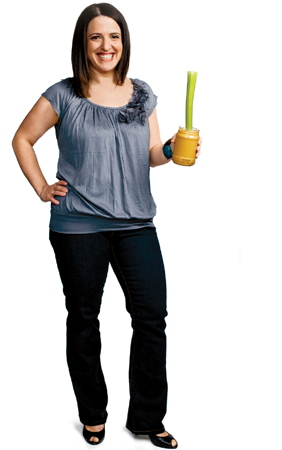
“I don’t understand the difference between good and bad fat.”
YAEL DRINKLE
YMCA Program Director
 HEALTHY FAT CHALLENGE: In her quest to lose weight, Yael has become an obsessive label reader and tends to buy only “fat-free” or “low-fat” fare, including reduced-fat peanut butter. But her fat monitoring may actually be hampering her health, since she’s probably not getting enough good-for-you fats into her overall diet.
HEALTHY FAT CHALLENGE: In her quest to lose weight, Yael has become an obsessive label reader and tends to buy only “fat-free” or “low-fat” fare, including reduced-fat peanut butter. But her fat monitoring may actually be hampering her health, since she’s probably not getting enough good-for-you fats into her overall diet.
OUR ADVICE
▪ Shift your focus away from total fat. Don’t just look at the total fat on the label: It includes bad fats and good fats, so it’s misleading. Instead, look at the specific types of fat listed under total fat. Aim for more mono-and poly-unsaturated fats, and no trans.
▪ Know a good fat when you see it. If a fat is liquid at room temperature, such as olive and canola oils, it’s likely a good fat. If the fat is solid at room temperature (butter, lard, or shortening), it’s higher in saturated fat and may contain trans fats. Every rule has exceptions, though. In this case, it’s dairy, which can be high in saturated fat whether solid (cheese) or liquid (cream).
▪ Low-fat isn’t always better. Don’t automatically default to the low-fat version. In the case of reduced-fat peanut butter, you might be saving some calories and fat grams, but you’re missing out on the healthy oils that have been stripped away. Instead, you’re getting fillers like sweeteners, thickeners, and hydrogenated oils. It’s not a good trade-off.
It’s been touted that coconut oil fights heart disease and promotes weight loss, but there’s limited evidence to back up those claims. It’s true that coconut oil may not raise blood cholesterol as much as other saturated fats, but stick with vegetable oils that have reams of research supporting their benefits.
ONE DELICIOUS WAY TO WORK more nuts into your diet is to grind them into rich, savory sauces and dips. It’s a technique used throughout the Mediterranean. Try a variety of Italian pestos with nuts and herbs or the Middle Eastern dip muhammara.
Cilantro-Walnut Pesto

3 garlic cloves
3 cups packed cilantro leaves and tender stems (about 3 ounces)
¼ cup chopped walnuts, toasted
2 tablespoons white wine vinegar
½ teaspoon salt
¼ cup organic vegetable broth
3 tablespoons extra-virgin olive oil
1. Place garlic in a food processor; pulse 10 times or until minced. Add cilantro and next 3 ingredients to processor; process 15 seconds. Combine broth and oil in a small bowl. With processor on, slowly pour broth mixture through food chute; process until well blended. Serves 16 (serving size: 1 tablespoon).
CALORIES 33; FAT 3.9g (sat 0.5g, mono 2.1g, poly 1.2g); PROTEIN 0.4g; CARB 0.7g; FIBER 0.3g; CHOL 0mg; IRON 0.2mg; SODIUM 85mg; CALCIUM 6mg
To prevent pesto from browning while it’s stored in the refrigerator, place a piece of plastic wrap directly on the surface. Serve pesto with fresh vegetables, use it as a pizza topping, or spread on crostini.
Muhammara is a sweet-spicy Middle Eastern dip made with roasted bell pepper, walnuts, and, traditionally, Aleppo pepper and pomegranate molasses. To make it easy, this version is made with readily available crushed red pepper and honey.

3 red bell peppers
¼ cup walnut halves, toasted anddivided
¼ cup plain dry breadcrumbs
3 tablespoons extra-virgin olive oil
2 tablespoons tomato paste
1 teaspoon ground cumin
1 teaspoon honey
½ teaspoon salt
¼ teaspoon crushed red pepper
⅛ teaspoon ground cinnamon
1 garlic clove
2 tablespoons fresh lime juice
18 radishes, halved
18 baby carrots with tops, trimmed
18 baby lettuce leaves (such as baby romaine)
1. Preheat broiler.
2. Cut bell peppers in half lengthwise; discard seeds and membranes. Place pepper halves, skin sides up, on a foil-lined baking sheet; flatten with hand. Broil 20 minutes or until blackened. Place in a zip-top plastic bag; seal. Let stand 20 minutes. Peel peppers, and discard skins.
3. Place 4 bell pepper halves, 3 tablespoons walnuts, breadcrumbs, and next 8 ingredients in a food processor, and process until smooth. Add remaining 2 bell pepper halves; pulse until coarsely chopped. Spoon dip into a bowl; stir in juice. Top with remaining 1 tablespoon walnuts. Serve with radishes, carrots, and lettuce. Serves 6 (serving size: about ½ cup dip, 6 radish halves, 3 carrots, and 3 lettuce leaves).
CALORIES 33; FAT 10.1g (sat 1.3g, mono 5.4g, poly 3g); PROTEIN 2.7g; CARB 14.5g; FIBER 3.6g; CHOL 0mg; IRON 1.5mg; SODIUM 317mg; CALCIUM 42mg
SEEK OUT SEEDS
Similar to nuts, seeds are compact packages of good-for-you fats. Get to know pumpkinseeds (pepitas), sunflower seeds, sesame seeds, and flaxseeds. Most are plentiful in protein, too. Flaxseeds have the added benefit of ALA omega-3, the plant source of this heart-healthy fatty acid.
DON’T THINK OF AVOCADOS as simply a key ingredient in the classic Mexican dip. This creamy green fruit deserves a regular spot on your menu rotation. Rich, filling, and packed with healthy monounsaturated fats, avocados are the perfect addition to salads, sandwiches, soups, and entrées.
Roasted Corn and Radish Salad with Avocado-Herb Dressing
The cool creaminess of avocado helps temper the spicy bite from the radishes and adds extra flavor and texture.

½ ripe peeled avocado, sliced
1 teaspoon fresh lime juice
2 ears yellow corn with husks
2 heads Boston or Bibb lettuce
½ cup thinly sliced radishes
½ cup Avocado-Herb Dressing (recipe at right)
1. Preheat oven to 450°.
2. Combine sliced avocado and juice in a small bowl; cover and refrigerate. Trim both ends of corn cobs, leaving husks from corn intact. Place corn on a baking sheet. Bake at 450° for 20 minutes or until tender. Cool. Remove husks from corn; scrub silks from corn. Cut kernels from ears of corn; discard cobs.
3. Chop lettuce to measure 4 cups. Combine chopped lettuce, avocado mixture, corn, and radishes. Serve with Avocado-Herb Dressing. Serves 4 (serving size: 1 cup salad and 2 tablespoons dressing).
CALORIES 200; FAT 15.5g (sat 2.2g, mono 8.4g, poly 3.4g); PROTEIN 3.8g; CARB 14.7g; FIBER 4.8g; CHOL 9mg; IRON 1.6mg; SODIUM 165mg; CALC 51mg
Avocado-Herb Dressing
½ cup canola mayonnaise
¼ cup finely chopped green onions
¼ cup reduced-fat sour cream
1 tablespoon chopped fresh flat-leaf parsley
1 tablespoon chopped fresh chives
1 teaspoon chopped fresh tarragon
1 teaspoon anchovy paste
⅛ teaspoon salt
1 garlic clove, minced
½ ripe peeled avocado
2 tablespoons water
1 tablespoon white wine vinegar
3 drops hot sauce
1. Place first 10 ingredients in a food processor; process until smooth. With processor on, pour 2 tablespoons water, vinegar, and hot sauce through food chute, processing until blended. Store dressing in an airtight container in refrigerator. Serves 20 (serving size: 1 tablespoon).
CALORIES 33; FAT 5.6g (sat 0.8g, mono 2.9g, poly 1.3g); PROTEIN 0.3g; CARB 0.8g; FIBER 0.4g; CHOL 4mg; IRON 0.1mg; SODIUM 73mg; CALC 7mg
Avocado Corn Chowder with Grilled Chicken
“I made this without the chicken and added more veggies, and it was oustanding,” said TravelChickie on CookingLight.com. Jeanne1 thought it was amazing: “I did not stir in any of the toppings but instead served them in small dishes so each soup serving was a ‘make it like you like it’ sort of thing. It was perfect and so easy.”

2 ripe avocados, divided
1½ cups water
½ cup fresh orange juice
1 teaspoon honey
1 teaspoon kosher salt, divided
½ teaspoon freshly ground black pepper, divided
¼ teaspoon ground red pepper (optional)
12 ounces skinless, boneless chicken breast
1 teaspoon olive oil
1 small garlic clove, cut in half
1½ cups fresh corn kernels (about 3 ears)
1 cup chopped red bell pepper
⅓ cup chopped green onions
¼ cup chopped fresh cilantro
4 lime wedges
1. Peel and coarsely chop 1 avocado; place in a blender. Add 1½ cups water, orange juice, honey, ¾ teaspoon salt, ¼ teaspoon black pepper, and, if desired, red pepper; blend until smooth. Place in freezer to chill while chicken cooks.
2. Heat a grill pan over medium-high heat. Brush chicken with oil; sprinkle with remaining ¼ teaspoon salt and remaining ¼ teaspoon black pepper. Add chicken to pan; cook 4 minutes on each side or until done. Remove chicken from pan; rub chicken with cut sides of garlic halves. Let chicken stand 10 minutes; cut or shred into bite-sized pieces.
3. Peel and dice remaining avocado. Stir diced avocado, corn, bell pepper, and onions into chilled avocado puree. Spoon chowder into each of 4 bowls; top with chicken and cilantro. Serve with lime wedges. Serves 4 (serving size: 1¼ cups chowder, about 2 ounces chicken, 1 tablespoon cilantro, and 1 lime wedge).
CALORIES 57; FAT 17.9g (sat 2.7g, mono 11.2g, poly 2.6g); PROTEIN 24.5g; CARB 30g; FIBER 9.7g; CHOL 49mg; IRON 2mg; SODIUM 558mg; CALC 39mg
OLIVE OIL SEEMS TO GET ALL THE GLORY, but olives themselves are worthy of your attention, too. These tiny, brined fruits—one of the oldest foods known—are packed with healthy monounsaturated fat, mostly in the form of oleic acid. They’re also full of vitamin E, polyphenols, and flavonoids.
Linguine with Two-Olive Marinara
This recipe’s versatile sauce can also be spooned over cheese ravioli, used as a topping for pizza, or served with breadsticks as an appetizer. Cook the linguine while the sauce simmers.

2 teaspoons olive oil
⅔ cup chopped onion
2 teaspoons fresh minced garlic
¾ cup sliced pitted green olives (about 15)
1 (2¼-ounce) can sliced ripe olives, drained
¼ teaspoon sugar
¼ teaspoon crushed red pepper
¼ teaspoon black pepper
¼ teaspoon dried oregano
⅓ cup dry white wine
1 (28-ounce) can crushed tomatoes, undrained
10 ounces uncooked linguine
¾ cup (3 ounces) grated fresh Parmesan cheese
2 tablespoons chopped fresh parsley
1. Heat a Dutch oven over medium-high heat. Add oil to pan; swirl to coat. Add onion; sauté 3 minutes or until tender. Stir in garlic; sauté 1 minute. Add olives; sauté 30 seconds. Stir in sugar, red pepper, black pepper, and oregano; cook 1 minute, stirring constantly. Add wine; cook 30 seconds. Stir in tomatoes; bring to a boil. Reduce heat; simmer 30 minutes. Remove from heat; keep warm.
2. Cook pasta according to package directions, omitting salt and fat. Drain. Arrange ⅔ cup pasta on each of 6 plates; top each serving with ½ cup sauce, 2 tablespoons cheese, and 1 teaspoon parsley. Serves 6.
CALORIES 338; FAT 9.8g (sat 3g, mono 5g, poly 1g); PROTEIN 14.3g; CARB 48.9g; FIBER 4.3g; CHOL 10mg; IRON 3.7mg; SODIUM 808mg; CALC 246mg
Apricot, Plum, and Chicken Tagine with Olives
Moroccan stews—typically complex mixtures of spices, fruits, vegetables, and meat—provide many opportunities to balance tastes. In this dish, briny olives counter the sweetness of dried fruit and sautéed onions. Sautéeing the spices draws out their essences and makes them more potent.

1 teaspoon olive oil
1 pound skinless, boneless chicken thighs, halved
1 cup chopped onion (about 1 medium)
1 tablespoon grated peeled fresh ginger
3 garlic cloves, minced
1 teaspoon ground turmeric
1 teaspoon ground cumin
¼ teaspoon fennel seeds
¼ teaspoon ground cinnamon
½ cup dried apricots, halved
½ cup pitted dried plums, halved
½ teaspoon salt
20 pitted kalamata olives, halved
1 (14-ounce) can fat-free, lower-sodium chicken broth
3 tablespoons chopped fresh cilantro
½ teaspoon grated lemon rind
3 cups hot cooked couscous
1. Heat a large Dutch oven over medium-high heat. Add oil to pan; swirl to coat.Add chicken to pan; cook 3 minutes on each side or until browned. Place chicken on a plate, and keep warm.
2. Add onion to pan; sauté 4 minutes or until golden. Add ginger and garlic; sauté 30 seconds. Stir in turmeric, cumin, fennel seeds, and cinnamon; sauté 15 seconds, stirring constantly. Return chicken to pan. Add apricots and next 4 ingredients; bring to a boil. Cover, reduce heat, and simmer 30 minutes or until chicken is tender. Remove from heat; stir in cilantro and rind. Serve over couscous. Serves 6 (serving size: ⅔ cup chicken mixture and ½ cup couscous).
CALORIES 59; FAT 10.1g (sat 2.2g, mono 5.3g, poly 1.8g); PROTEIN 18.8g; CARB 40.5g; FIBER 3.7g; CHOL 50mg; IRON 2.4mg; SODIUM 568mg; CALC 45mg
COACHING SESSION
with ALLISON FISHMAN
DON’T FEAR FATS

It’s time to get over your fat phobia and embrace the notion that not all fats are bad. Here’s how:
▪ Add oil at the end. One of the easiest ways to make over a bland, low-fat diet is to add some healthy, happy fats. Start with a decorative oil dispenser, and fill it with a good-quality extra-virgin olive oil or a flavor-packed sesame oil. Then use it as a finishing oil, not a cooking oil—something to drizzle on at the end.
▪ Pair your healthy fats with veggies. Top your salads with cubes of avocado or a sprinkling of sesame seeds, add peanut sauce to your stir-fries, and toss toasted hazelnuts over your sautéed green beans.
▪ Forgo the naked salad. There’s no need to skip dressing, or have just a tiny amount on the side. Adding a healthy oil to your greens actually helps your body absorb the nutrients, and it boosts the filling power of your salad. Instead of creamy dressings, make your own vinaigrette or try one that derives its creaminess from avocado.
SKIP THE CREAMY BOTTLED DRESSINGS and make your own. It really is easy. The ratio of oil and vinegar stays basically the same, but the variations are endless. Simply whisk ingredients in a bowl or combine in a Mason jar, close the lid tightly, and shake vigorously.
HOW TO MIX A BASIC VINAIGRETTE
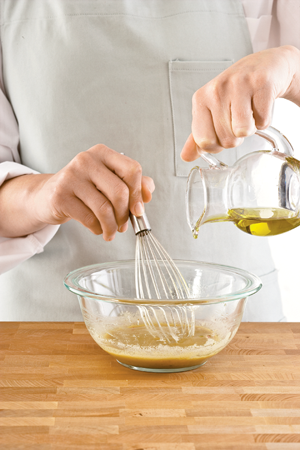
The simplicity of a good vinaigrette is a thing of beauty. Grab a bowl, whisk together oil and vinegar, and add a pinch of salt to bring dull lettuces to life, give veggies a bold flavor boost, and add tang to marinated meats.
A vinaigrette may be easy to prepare, but there is a method to its magic. Success starts with good ingredients and ends with emulsification—thoroughly blendingthe oil’s fat molecules and the watery vinegar. Adding a touch of creamy Dijon mustard eases the emulsification process. From there, flavor as you see fit. Additions can be as simple as a pinch of salt and pepper or as complex as a bit of honey, fresh herbs, or minced shallots.

1. Build a flavor base. Finely mince 2 tablespoons shallots so pieces will incorporate easily and spread throughout your dressing. Place in a bowl with 1 teaspoon Dijon mustard.

2. Add an acid. Pour in 2 tablespoons sherry vinegar, ¼ teaspoon kosher salt, and ¼ teaspoon freshly ground black pepper; stir with a whisk to combine ingredients.

3. Whisk in oil. Slowly pour 6 tablespoons extra-virgin olive oil (almost drop by drop) into the mixture, whisking as you go to incorporate and create a creamy, emulsified finish.

4. Success! When properly emulsified, ingredients are sus-pended throughout the mix (right). A broken vinaigrette (left) will have clear separation between the oil and the vinegar.
Try tossing this vinaigrette with rice noodles.
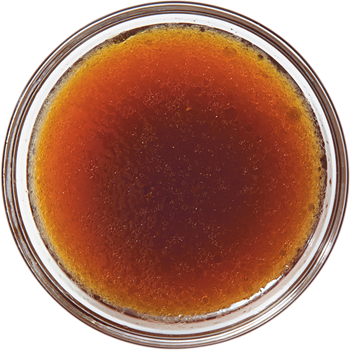
Sesame Vinaigrette
1½ tablespoons fresh lemon juice
1 tablespoon lower-sodium soy sauce
1 tablespoon honey
1½ teaspoons dark sesame oil
1. Combine all ingredients in a small bowl, stirring with a whisk. Serves 4 (serving size: 1 tablespoon).
CALORIES 33; FAT 1.7g (sat 0.2g, mono 0.7g, poly 0.7g); PROTEIN 0.3g; CARB 5.1g; FIBER 0g; CHOL 0mg; IRON 0mg; SODIUM 152mg; CALC 1mg
Mustard Seed–Chive Vinaigrette
Toss with gourmet greens or drizzle over salmon.

Mustard Seed–Chive Vinaigrettte
2 tablespoons sherry vinegar
1 tablespoon water
1 teaspoon country-style Dijon mustard
1 teaspoon honey
1 tablespoon extra-virgin olive oil
2 tablespoons chopped fresh chives
½ teaspoon kosher salt
½ teaspoon mustard seeds
½ teaspoon freshly ground black pepper
1. Combine first 4 ingredients in a small bowl; stir with a whisk. Slowly add oil, stirring constantly with a whisk until well blended. Stir in chives and remaining ingredients. Serves 5 (serving size: about 1 tablespoon).
CALORIES 33; FAT 2.8g (sat 0.4g, mono 2g, poly 0.3g); PROTEIN 0.2g; CARB 1.7g; FIBER 0.1g; CHOL 0mg; IRON 0.1mg; SODIUM 212mg; CALC 4mg
You can use any variety of honey that you like.

Champagne Vinaigrette
9 tablespoons white wine vinegar
1½ tablespoons wildflower honey
½ teaspoon fine sea salt
1 cup canola oil
3 tablespoons chopped fresh basil
3 tablespoons minced fresh chives
1. Combine first 3 ingredients in a medium bowl; slowly whisk in oil until combined. Stir in basil and chives. Store, covered, in refrigerator for up to 5 days. Serves 27 (serving size: 1 tablespoon).
CALORIES 33; FAT 8.6g (sat 0.6g, mono 5.1g, poly 2.6g); PROTEIN 0g; CARB 1.1g; FIBER 0g; CHOL 0mg; IRON 0mg; SODIUM 45mg; CALC 1mg
Fresh basil makes all the difference.

Easy Herb Vinaigrette
2 tablespoons chopped fresh basil
1 tablespoon finely chopped shallots
2 tablespoons Champagne vinegar
1 tablespoon extra-virgin olive oil
2 teaspoons sugar
½ teaspoon salt
¼ teaspoon freshly ground black pepper
1. Combine all ingredients in a small bowl, stirring with a whisk. Serves 5 (serving size: 1 tablespoon).
CALORIES 33; FAT 2.3g (sat 0.3g, mono 1.8g, poly 0.2g); PROTEIN 0.1g; CARB 2.1g; FIBER 0g; CHOL 0mg; IRON 0.1mg; SODIUM 194mg; CALC 3mg